A great alternative to an artificial fence can be a green live fence. Combining various cultures, combining plants of various colors and height, each gardener can not only put their plot beautifully, but also make it an unusual, original and original.
Features of alive hedge
Fashion for living hedges came to us from France, where in the 18th century noble landowners decorated their estates of magnificent gardens, in which high shrubs were performed not only by decorative function, but also protected the territory from strong winds. Such "lively" fences were created with special care and maintained in excellent condition due to constant care.
Livestore is the trees or shrubs or shrubs lined in 1 or 2 rows. With such a planting, the plants are located as close as possible to each other, creating a practically impassable barrier from the trunks, branches and leaves. Such hedges are different heights:
- low achieve in height of not more than 1 m;
- the average hedge in heights grows to 1.5 m;
- high - these are the fences with a height of more than 2 m.
In addition to the above-mentioned options, there are very small plantings that play the role of borders and are used for the framing of flower, lawns, paths, etc.
As for the plants, slow-growing cultures are often used for such fences, which are infrequently needed. However, it is often possible to meet a fast-growing alive fence from artistic circumcised high shrubs. Among other things, when creating such green fences, some blooming and fruit plants are sometimes planted, which, as a rule, is cropped extremely rarely, so as not to harm appearance and not reduce the amount of harvest.
To protect the plot from the wind, curious eyes and unspoken guests in the form of animals, gardeners plant crops are sufficiently tight and pick up the varieties of plants that can create an impenetrable wall from the branches.
What you need to take into account when forming a living hedge
Determining with plants for green hedges, it is necessary to solve in advance how you want to see the end result. For example, it is possible to create a fence around the garden from shrubs of one species. As a rule, plants with high decorative qualities are chosen for such a fence: barberries, spire, white dend, hawthorn, caticker, etc.
An alternative to homogeneous hedge can be a more complex version - a mixed fence. As plants for such a living hedge, various types of trees and shrubs are used. An important step in the formation of a green fence is to pre-create a plan for planting cultures. A very often mixed livestock is performed from several species of trees that are planted to create the impression of natural growth.
An evergreen shrubs are a popular variant of the plants for living inges. Their main advantage is the ability to maintain a decorative look throughout the year. The fence from conifers greatly looks like in the summer and in winter, when it stands out a bright spot against white snow. Among other things, evergreen cultures are rather unpretentious to soils and do not require frequent irrigation and trimming.
When planting plants, you need to take into account the speed of their growth. Slow-growing species do not require frequent trimming, while fast-growing shrubs for living hedges will have to put in order quite often, giving them the necessary form. It is also important to understand that the decorative green fence will not immediately acquire the species you need, it will take a certain time. Thinking through the style and design of the hedge you need in advance, and for this it is important to be able to imagine the end result. So as not to be mistaken in the choice of plants, you can use the services of a qualified landscape designer.
Selecting cultures for decorative hedge, you need to focus on their height. For example, a low fence can be created with the help of a hunter, yellow acacia, samshet, Japanese alcohol or gooseberry. The fence of a height of at least 3 m will be made of white turf, a cracker, a kizilnik, teu, tees, lilac, rosehip, juniper, etc.
Plant varieties for living hedges
- IRGA is a decorative tree or a shrub, reaching a height of 2-3 m and possessing beautiful foliage. In the spring, it is painted in a silver-green shade, in the summer of foliage changes the color to saturated green, and with the advent of autumn it becomes bright orange. The flowering period of culture falls on May, the inflorescences of the Irgi small, white or pink shade. In the period of fruiting on the tree, the berries of black color ripen - they can be eaten or as a medicament. Plus, plants can be considered unpretentious, as well as high resistance to disease and pests.
- Currant is golden - this is a shrub that grows up to 2 m in height, has pubescent shoots and has a beautiful toothed foliage, which in the fall acquires a pinkish shade. Flowers currant since the end of spring until the start of summer, releasing bright yellow fragrant buds. The plant is fruit, although the crops are not assembled from it due to the low taste quality of the fruit. Culture loves well-lit plots, but can grow in half. In frequent irrigation, it does not need, perfectly coming up in any soil, loves feeding with organic fertilizers.
- Hawthorn - a large shrub, reaching a height of 2-4 m. The branches are covered with spikes, the leaves are rather large, grow up to 12 cm. During the flowering period, the white shade inflorescences are producing small pear or rounded fruits. The hawthorn ripes all autumn, right up to the onset of frosts. The decorativeness of the plant in the spring is due to its attractive inflorescences, the bush is covered with bright fruits in the fall, and its foliage acquires an orange-red shade. In horticulture, terry varieties of culture, whose buds resemble roses are widely used. Among the sorts of hawthorn, you can find both tall varieties, they belong to the Hawthorn Siberian. Such a tree reaches a height of 6 m. This plant is not very consistently, can carry dry weather and grow on poor soils. However, culture loves the sun and reacts well to feeding. To plant the hawthorn in the shade is not worth it, because it will bloom badly. This plant needs pruning. As a rule, the procedure is carried out in order to rejuvenate the bush every 20 years.
- The dend is a shrub tall of about 3-4 m. It has a beautiful foliage, some varieties have two shades: the middle of the sheet is painted in light green, and the edges - white colors. In the gardening, the derength of which is very popular, the decorativeness of which is due to a saturated-red tint of branches. The flowering period of culture falls on May - at this time the shrub is covered with small milky and white umbrella inflorescences. By the fall of the foliage of the plant acquires orange or red. The dend is growing well on the damp soil, the composition of the soil is not important. The culture is non-pecked, perfectly carries out in the shade, tolerates frost. The dend refers to fast-growing species, therefore, to maintain a beautiful view of green hedges, every spring must be trimmed by plants.
- Barbaris is another popular shrub for a living hedge. It grows up to 3 meters high, the foliage is small, oval shape and bright green. In the second half of May, Barbaris blooms yellow inflorescences collected in the brush. By the fall of foliage from the green turns into orange-red, and fruits ripen on the brushes. Barberry berries are small, oblong, depending on the variety can be painted in yellow, pink, red, black, brown. Fruits, caused in September, do not fall off the bush before the onset of spring.
- Aria is blackfold - the mid-grade bush with a height of 2-3 m. It has a dark green oval foliage, which in the fall is painted in red or crimson tone. Aria flowers from the end of spring until the middle of the summer, the release of white-pink buds. By the end of the summer, black round berries are ripening at the brushes, which are suitable for food and are used to prepare jams, marmalands, jams or wines. The fruits of the plant have therapeutic properties, therefore applied in folk medicine for the treatment of hypertension, gastritis and other diseases.
- Another popular bush for living hedge is heather. This is a low-speed evergreen plant, the height of which ranges from 10 to 70 cm. The shoots are covered with dark green small foliage, according to resembling scales. During the flowering, the heather is extremely beautiful, its side shoots along its entire length are covered with gentle-pink small flower. By winter, the plant acquires a reddish tint. Heather is demanding soil. It grows poorly in lime soils, does not like an overaction of calcium. The optimal soil acidity should have an indicator of PH from 4.5 to 5.5. After landing heather, the land around the bushes needs to be mulched peat. For the winter, the plant is covered with a sweetheart.
- The Kizvyzer is the average decorative shrub, whose height reaches 2-3 m depending on the variety. Gardening uses several types of culture. One of the popular varieties is a brilliant caticker, it has a small oval foliage with a glossy surface. By autumn, this variety acquires a red shade, fruits large black berries that do not fall off the bush all winter. Another popular view is the blackfold catcher. Its height reaches 2 m, the inflorescences are assembled in the brush, the fruits of black color, covered with a sly rode. Kizylniki bloom from May to June, are unpretentious plants, easily carry the shadow, but it is better to develop on well-lit plots. Culture reacts well to regular trimming.
- The honeysuckle edible grows to 1.5 m in height. This is an empty shrub with a large number of branches. The foliage at the honeysuckle is slightly pubescent, the fruits are small, oblong, blue, covered with a white bloom. The plants of the plants are edible, have high taste qualities and therapeutic properties. In folk medicine, the fruit of the honeysuckle is used to treat diseases of the circulatory system, stomach, liver, bladder and other organs. Since April, the culture branches are covered with delicate foliage, by the end of the spring the honeysuckle produces beautiful flowers of light yellow or greenish shade. The plant belongs to the mednel, so attracts the bees to the section. This culture is undemanding to soil, it is well tolerating the shadensing, cold and a short drought.
- Spiree, which is also called TaVold is a mid-grade plant, whose height, depending on the variety, can reach from 0.5 to 2.5 m. In gardening, approximately 50 species of this culture are used. If you correctly pick up a variety, you can create a living fence that will bloom from spring to late autumn. Spirea produces a large number of inflorescences that not only adorn the plot, but also attract pollinkers. The plant has long flexible stems, which are along with bootons, determine the decorativeness of the bushes. Most cultural varieties love well-lit plots, easily carry drought, in fertile soils are developing rapidly and abundantly bloom. Spirahy belong to the shrubs that need regular trimming. When performing such a procedure, it is important to take into account the features of the location of inflorescences. In some varieties, buds are blocked on the overwhelming branches - such spiries are taken to cut after the flowering season, so that new kidneys have managed to form on the shoots. In another group of species, buds are located at the ends of young shoots - these plants should be streaked in early spring. The cultures of the first group, as a rule, bloom from the end of spring to the beginning of summer. Spirea from the second group produce inflorescences in the fall.
- Henomeles, the second name of which "Japanese quince" is not a very high shrub growing up to 1-1.5 m. Henomelles blooms from mid-May to the first decade of June, at this time its branches are abundantly covered with excellent inflorescences with a diameter of about 3 cm . The shade of buds is light pink, orange, red. Light green leaves have a rounded shape and glossy surface. With the arrival of autumn, the shrub most often remains green, but it can also acquire a yellowish-red color on the tips of the leaves. The fruits of the Henomelles of yellow color, large, possess a pleasant smell and sour taste, in their own appearance they remind you of quince and can be used in food. Culture perfectly tolerates cold and withstands winter frosts, unpretentious in the choice of soil, normally develops in conditions of insufficient humidity. Hynemeles landing is best on open, well-lit territories.
- Turn - a sprawling shrub height from 1 to 4 m. This is an unpretentious plant that can grow even on the poorest soils. Turn branches are covered with spikes, foliage light green, smooth, oval shape. Flowers from April to May, releasing small white flowers, the diameter of which is 0.5-1 cm. Turn fruits with black berries of round shape, the fruits are edible and used as raw materials for the preparation of wines, syrups, jams, jams, citades, etc. NS. Plant berries can be eaten in fresh form, but to eliminate patience, they should be preoccupied. The culture is enough frost-resistant, prefers to grow on well-lit plots.
- Chubuschnik is a medium shrub, often used when creating alive hedges. In Russia, this plant is often called jasmine - this erroneous definition of culture has deserved thanks to the excellent aroma, which spreads its buds during flowering. The anchored potassium is represented by a huge amount of varieties, most of which are unpretentious in care, grow well in the sun and in a light half. With a lack of sunlight, the Chubushnik begins to bloom worse. The plant requires periodic irrigation, but the convergence and wetlands do not like. Occasionally needs pruning.
- An eavester is a plant, numbering more than 200 varieties, some of which belongs to evergreen cultures, and some of them to deciduous. An eaves can have a tree or shrubs, many of the cultivated varieties are very popular when creating alive hedges. Plant with small flowers of greenish or brown shade, the greatest decorative value is the fruits of the shrub. Becklet berries possess a selection, which after full ripening acquires a bright color of pink, red, brownish-orange shade. Fruits of culture of poisonous.
- Rowan is a low tree with a subtle barrel and beautiful foliage. This plant is often used in landscape design due to its high decorative qualities. During the flowering period on the branches of rowan, magnificent palate inflorescences are formed, consisting of many small white buds. In the fall, the rowan is fruits small bright orange berries. Its fruits are edible, but in the fresh form they are rarely used in food. From berries you can prepare jam, marmalade, jelly, jam, kissel and tincture. Rowan loves moistened soil, well tolerate the shadens.
Shrubs for living hedges, photo:
Landing Rules Live Hug
- Before planting any plants, it is very important to prepare the soil in advance. This process is carried out in the fall, approximately in October. Where the elevation will be located, the rope should be pulled. Focusing on this line, you need to dig up, the width of which will depend on how many rows of plants are planning to put. If there will be 1 row of shrubs in the hedge, then the width of the pit should be about 0.5 m. For a two-time planting, lift the trench with a width of 1 m. In the prepared ditch, pumped first a bit of the ground from the top layer of the soil, then fill the hole by manure, peat or compost. Manure is recommended to apply if you plan to plant boys.
- Saplings for living hedges should be sufficiently grown, age at least 2-3 years. Coniferous cultures if possible should be older than about 3-4 years old. Adult plants can be transplanted only in several cases, for example, if these are valuable breeds of conifers or if they relate to certain slow-growing types of cultures.
- Landing shrubs into a living fence should be carried out in such a way that the neck of the roots was located at the soil level or was blunting no more than 1-2 cm.
- The distance between individual plants should be chosen based on their size and features of the root system. For example, slow-growing species are planted more tight than fast-growing. If the hedge consists of one row of shrubs, then the distance between them should be 20-25 cm. In a two-round landing, the intervals between the plants should be at least 30-50 cm, and the distance between the rows is 30-60 cm.
- So that the culture in the process of growth is not broken, you can make a support for them. To do this, at an altitude of 40-50 cm above the ground along the future hedge, a long board is fixed.
- With a single-row landing, it is better to select plants with a strong, well-branched root system, a thick crown, a large number of branches and leaves. In a two-row hedge, it is not so powerful plants.
Features of the care of a living hedge
While the plants are very young, they need frequent and regular watering and periodic soil looser. Fertilizers are entered into the Earth, depending on the needs of a particular culture.
Fast-growing shrubs require periodic trimming - so your green fence will not lose its decorativeness. To give the garden to an even greater beauty and originality, you can create beautiful shapes from dense shrubs. The rules of pruning and the need for this procedure should also be coordinated with the needs of planted plants.
As a rule, the first time the elevation is cut for the second year after it is landing. Do it in the fall, at the time when shrubs will completely lose the foliage. So that the hedge did not swell at the bottom, it should be periodically cut in summer. Such a trimming stimulates the development of new branches from the kidneys located at the bottom of the shoots.
If the lower part of the fence lost decorativeness due to the insufficient amount of illumination, then shrubs need to be cropped in the form of a cone or trapezium, the side sides of which will have a slope at about 70 °. All broken, dry, dead shoots should be regularly deleted.
So that new branches grew more active, the elevation must be periodically fertilized. In the fall, the fallen foliage can be collected and left until overheat. The resulting compost fertilize the soil near the green hedge.

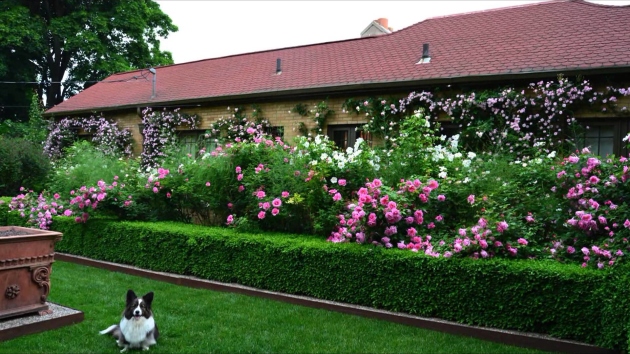
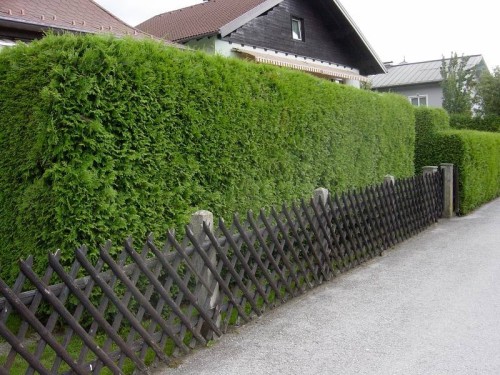
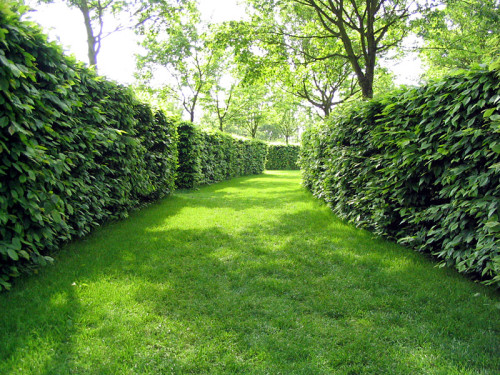
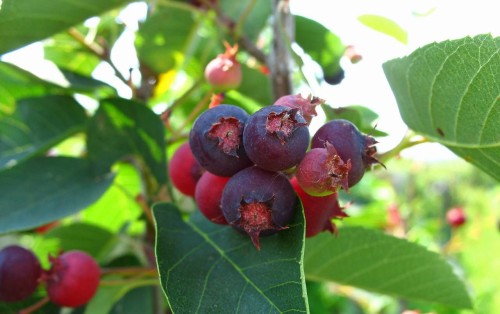
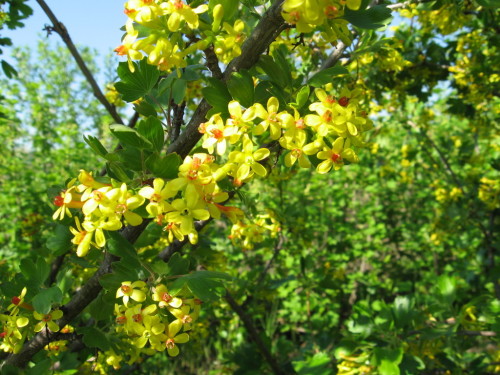
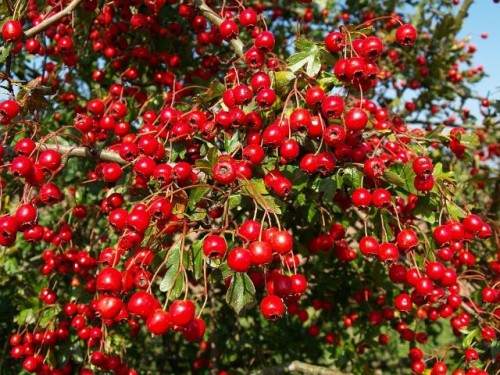
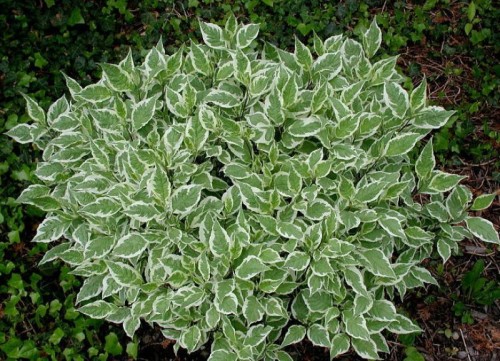
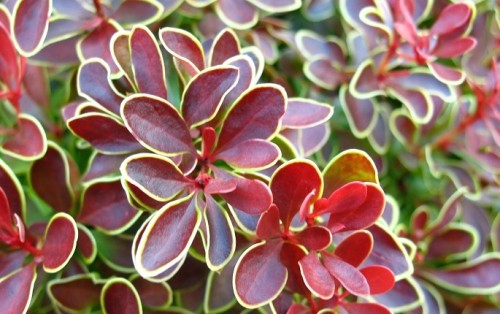
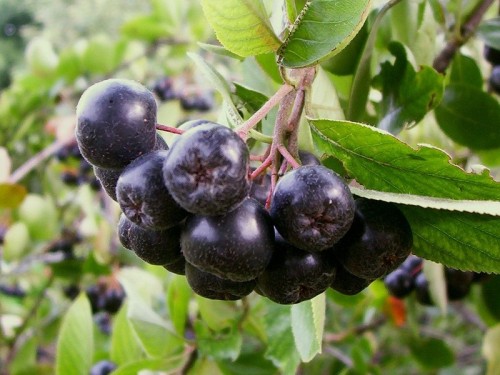
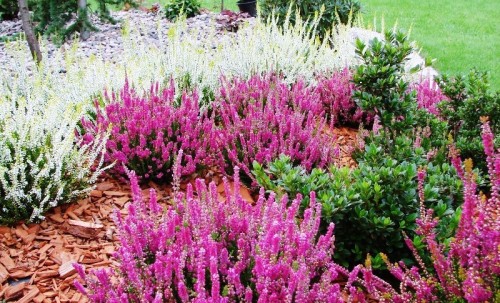
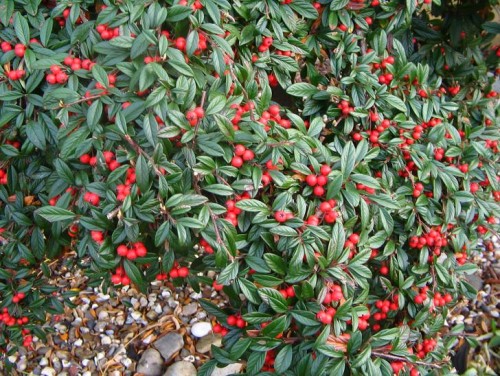
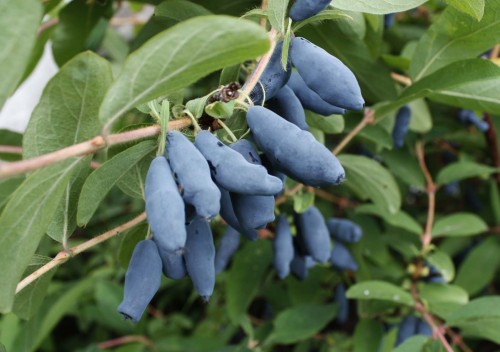
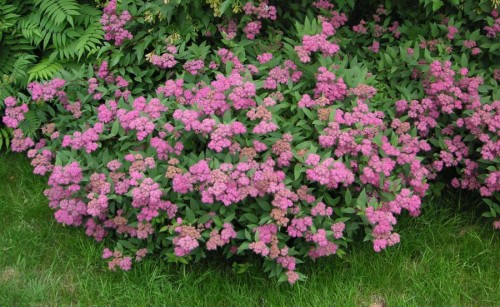


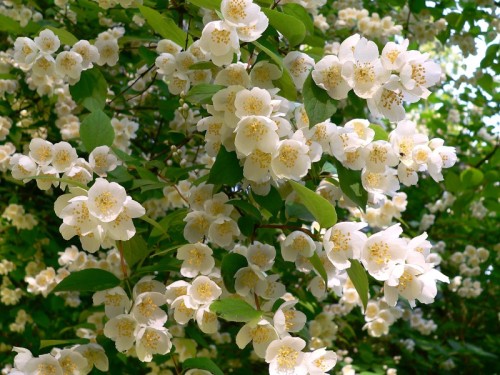
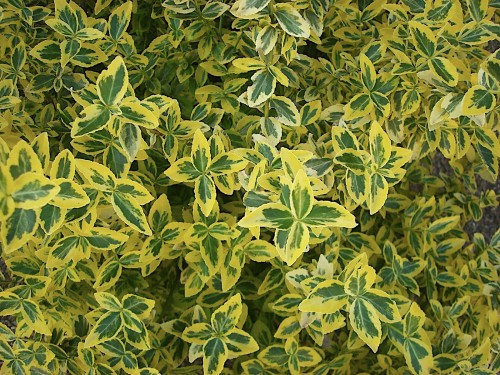
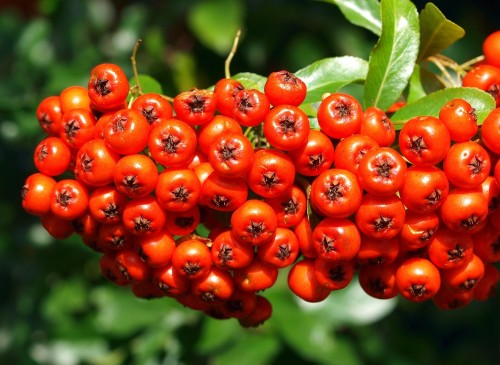
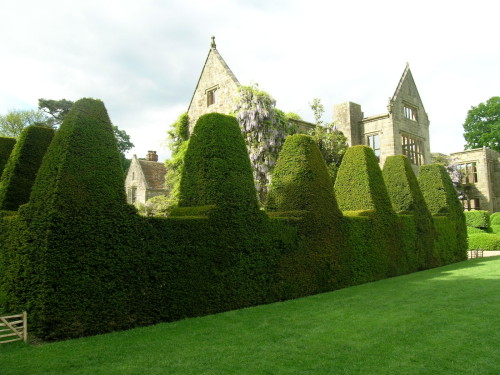
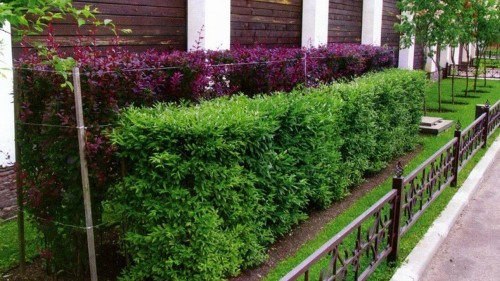












 Start a discussion ...
Start a discussion ...